Interview: Ian Edginton talks Cold War Fiends
18th March 2022
Out now in the pages of 2000 AD, the vampire Constanta returns to his fiendish ways in Fiends of the Eastern Front: 1963!
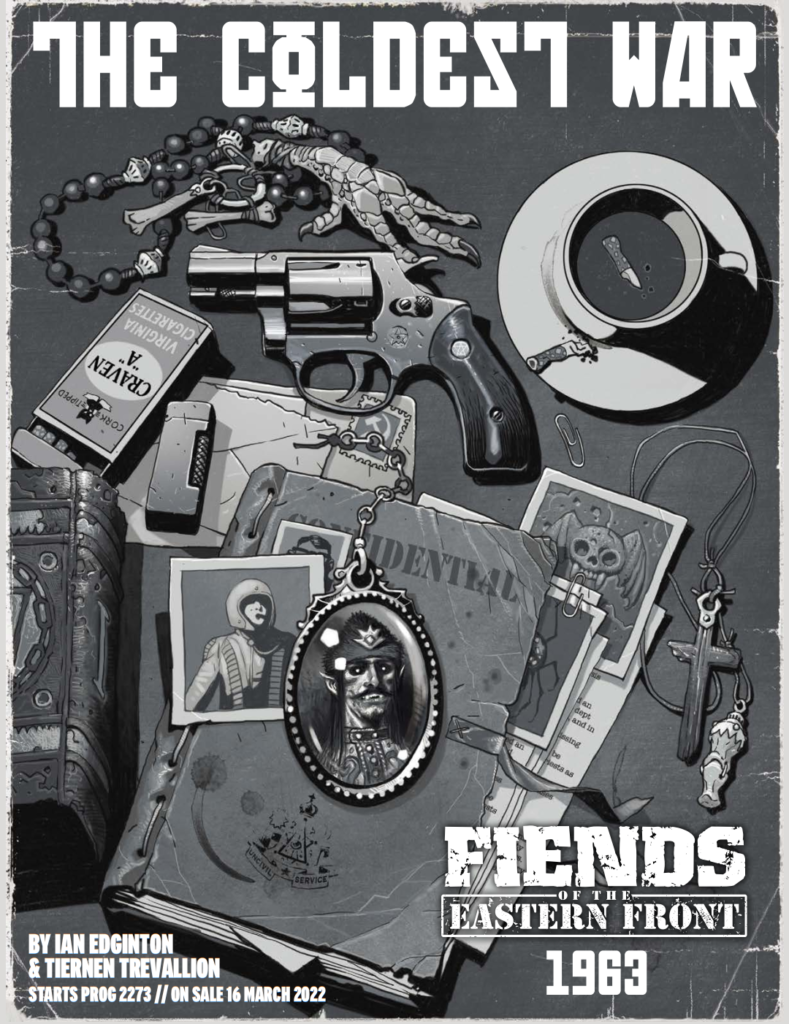
Fiends of the Eastern Front is the saga of the Vampire Constanta, cutting a bloody swath across battlefields across Europe for centuries. Created in 1980 by Gerry Finley-Day and Carlos Ezquerra for 2000 AD Progs 152-161, it brought classic horror in a chilling wartime tale to the pages of the Galaxy’s Greatest, hitting hard and fast, just 10 episodes long but going on to become one of those tales everyone remembers. Constanta next appeared some 26 years later in Stalingrad by David Bishop and Colin MacNeil (Judge Dredd Megazine #245-252, 2006).
But it’s Ian Edginton who’s recently rather taken the Vampire Constanta to his heart. He’s now written three Fiends series and has his fourth, Fiends of the Eastern Front: 1963, coming to you in 2000 AD Prog 2273, out 16 March!
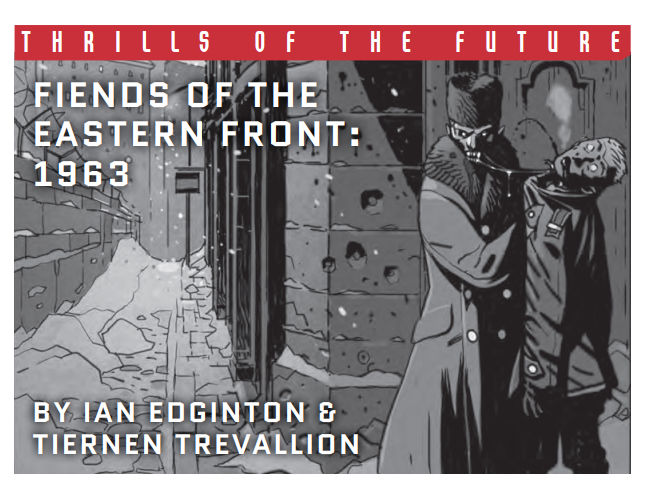
First, Edginton ventured back in time to the wintery Russian wastelands of the Napoleonic War in Fiends of the Eastern Front: 1812, drawn by Dave Taylor (2000 AD Progs 2100-2105.) Then he was joined by artist Tiernen Trevallion on Fiends of the Western Front (Progs 2111-2115), with Constanta turning up in France of 1916. And finally, we had the epic telling of this war-loving vampire’s origin in the acclaimed 2020 series, Constanta (Progs 2201-2211), again with Edginton joined by Trevallion.
And now… it’s time for Fiends of the Eastern Front: 1963. Cold war, warm blood.
Unfortunately, Tiernen’s tied up with things right now – specifically getting all that gorgeous artwork finished for this very strip, so we’re talking with a solo script-droid extraordinaire, Ian Edginton.
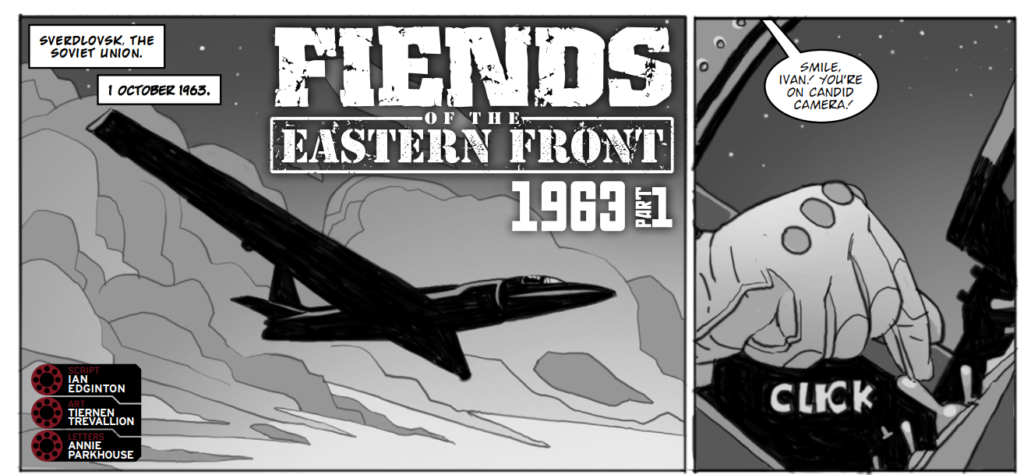
So, first things first… am I right in thinking we’re in Cold War territory here, a completely different kind of conflict to get involved in?
Ian Edginton: Definitely, it leans heavily into that 1960’s spy film genre, The Ipcress File, Funeral in Berlin, The Quiller Memorandum, The Spy Who Came in from the Cold, also the 2011 Tinker Tailor Soldier Spy remake and Spielberg’s Bridge of Spies. We’re not taking anything story-wise but more for mood and atmosphere. Grim, grey, monotone, lots of slushy snow and mistrust, even of your own side. That sort of thing.
Oh yes, having just seen the first episode, some of which is illustrating this interview, it’s definitely got that mood and atmosphere just right.
What delights have you got in store for us this time around, what can we expect from 1963?
IE: I don’t want to give too much away obviously but we do expand on Constanta’s history as he meets old enemies and makes a new friend, or rather an ally – friend might be a bit too much for him. The story builds on the Fiends universe, we establish that the worlds’ great nations, primarily the British, Russians, and the Americans have their own occult intelligence divisions.
In the closing days of World War Two, just as the Americans and the Russians made a mad dash to acquire the Nazi’s rocket scientists, the British and the Russians also scooped up the Nazi’s occultists. The Americans, being good God-fearing Christians were a bit late to the game.
Are we effectively doing a John Le Carre with vampires?
IE: With a dash of Len Deighton, yes.
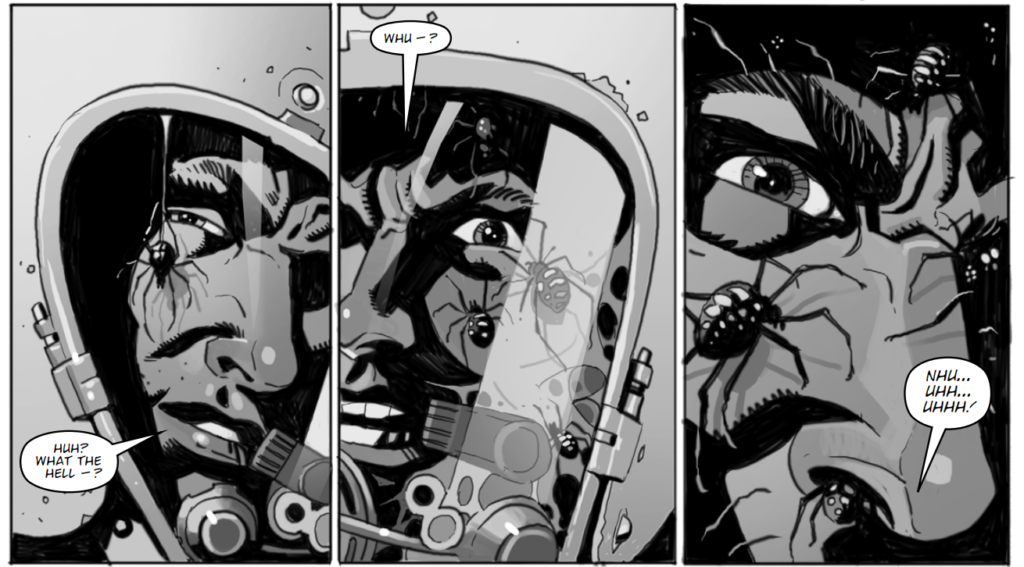

And will we be getting more into the fascinating through-story that we’ve been getting glimpses of? The connections of Baba Yaga, Legion, and Lt (later Colonel) Wilson?
IE: Absolutely! I want to spin a mythology around those characters, with more to come. We’re gradually building a world around Constanta.
Ian, we’ve talked before about Fiends (right here) being a very different kind of strip when it first appeared, way back in the early days of 2000 AD. Back then, the Progs were primarily full of sci-fi strips so to get a historical fantasy horror strip was something of a radical shift.
IE: I think the fact that it stood out from the rest, that it was so different, is what makes it so memorable. Even before I became a writer that first story by Carlos Ezquerra and Gerry Finley-Day really struck a chord with me. At its heart, it’s just such a cool idea! Then there was the excellent follow-up by David Bishop and Colin MacNeil – Stalingrad.
One thing that’s interesting is that the origin tale, Constanta, unlike all the others, was left undated, although we can make certain guesses from the setting. Was this a deliberate thing to allow a little wriggle room for any reason?
IE: Yes and no, how vague is that! Keeping the date of his origin ambiguous lends a kind of mythic edge to him and from a practical point of view it allows for some flexibility regarding future stories.
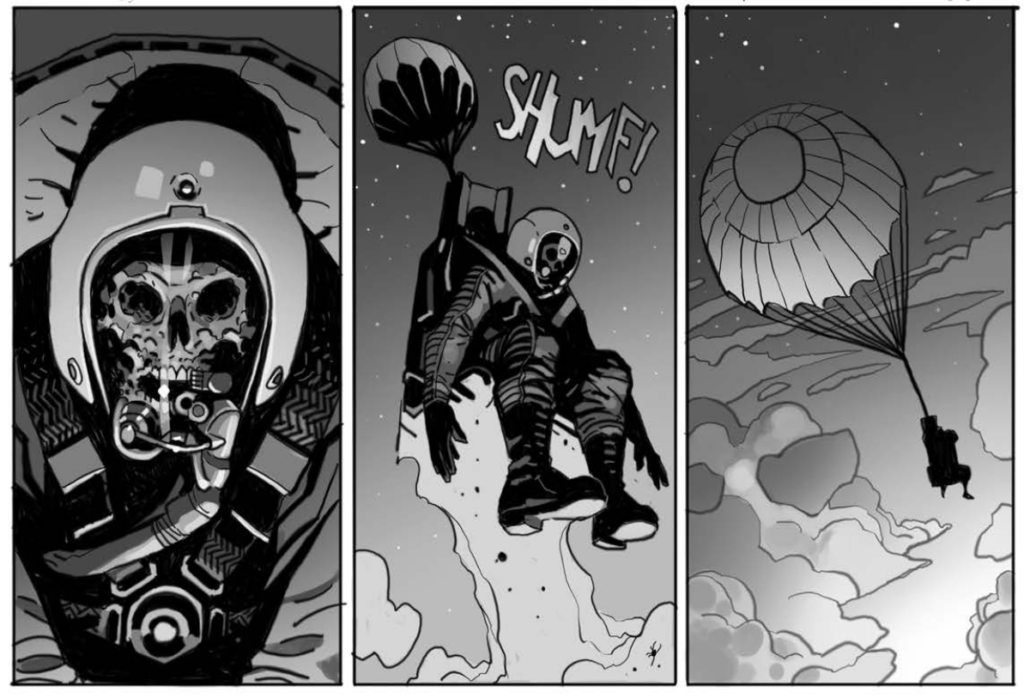
At the end of the Constanta series, there’s a deliciously teasing moment of Constanta going from being a creature of warfare and conflict to a creature who causes war and conflict. Along with the idea of Wilson being a pawn of the monsters of the world raging against Constanta.
IE: He was born in bloodshed, so it’s all he knows. He creates an environment in which he knows he can thrive.
It’s a fascinatingly huge world you’ve built in a surprisingly short number of episodes and from what was originally a very simple character, one that hid the who, where, and why of his existence. It’s also something that works well both as simple individual serials, with the latest exploits all telling a self-contained tale, but also, more importantly, when put together, it creates a rich sense of something extravagantly large and far-reaching.
Am I right in that thought that Baba Yaga’s influence, whether through Legion or not, is going to be felt throughout this series?
IE: She’s going to make her presence felt, yes, in this series and beyond. The Russians and Romanians (Constanta’s people) have a long history of invasion and animosity (not just Romania either as currents events in the Ukraine have shown), so she was a natural contender to be Constanta’s nemesis but there’s more to it than that. She presents a pre-revolutionary Russia, a much older country in its hierarchies and beliefs but as the stories move into the 20th century, the country changes (Communism for a start) the old ways are dying out and she finds herself becoming an anachronism. Ultimately she may have more in common with the eternal Constanta than her own people.
Presumably, you have this big flowchart somewhere with all the events in chronological order?
IE: Yep, I have it mapped out so I don’t have to try and keep it straight in my head.
There are the stories told so far, the ones that I have ready to go next, and then the ideas for the series after that. There’s also a sidebar of ideas that don’t fit into the timeline just yet.
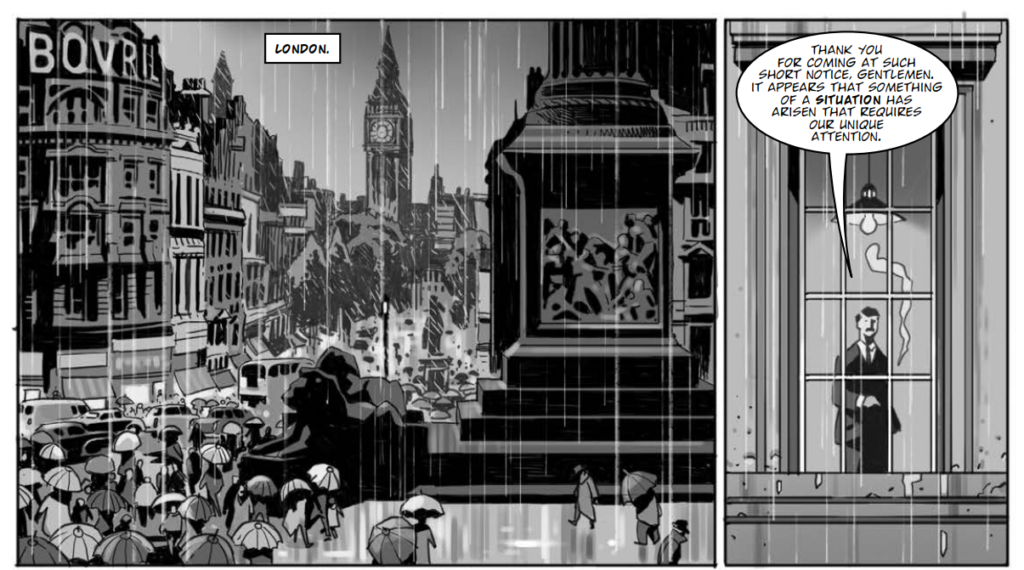
Now, at this point, I’d normally sing the praises of Tiernen, but he’s busy, busy, busy with the rather important job of actually finishing off the series – so, Ian, time to dish the dirt on your co-conspirator in all things Fiendish…
IE: It goes without saying but I’m going to say it anyway, Tiernen is a phenomenal artist, an extraordinary talent and lovely chap to boot! The texture, the tones, the composition! His artwork is sumptuous! We were throwing some ideas around for one of the Fiends 1963 covers and then a few days later he sends me a ‘rough’ which was anything but! It was amazing! You’ll know which cover I mean when you see it.
The nature of Constanta and the way in which you’ve developed the character certainly allows both of you plenty of scope to imagine a Constanta in so many different time periods.
IE: He’s a survivor, that’s what’s kept him going down the centuries but as time rolls on he starts to question what is he surviving for? There must be more to eternal life than this? It’s this gradual, growing awareness which sends him down an interesting path.
I’m assuming there’s some idea of an endpoint for the tale, especially with the fascinating idea of a growing group of agents working to bring Constanta down, but I’d also imagine that the nature of this tale, with the possibility of jumping back and forth in time, really does give you a world of possible storylines?
IE: Indeed, we’re not done yet!
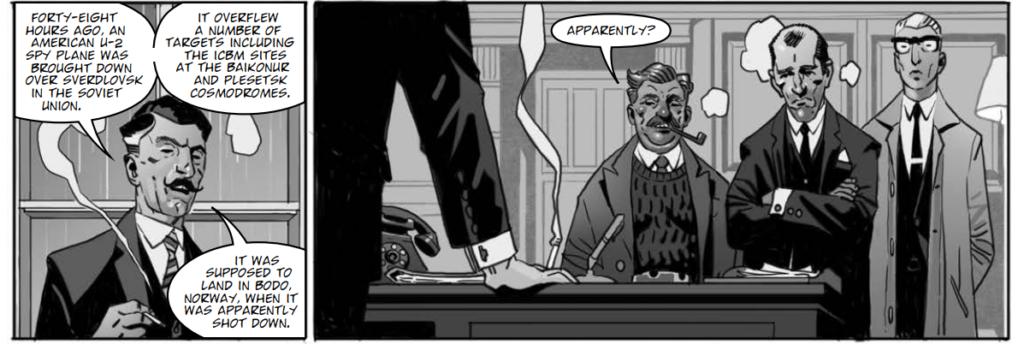
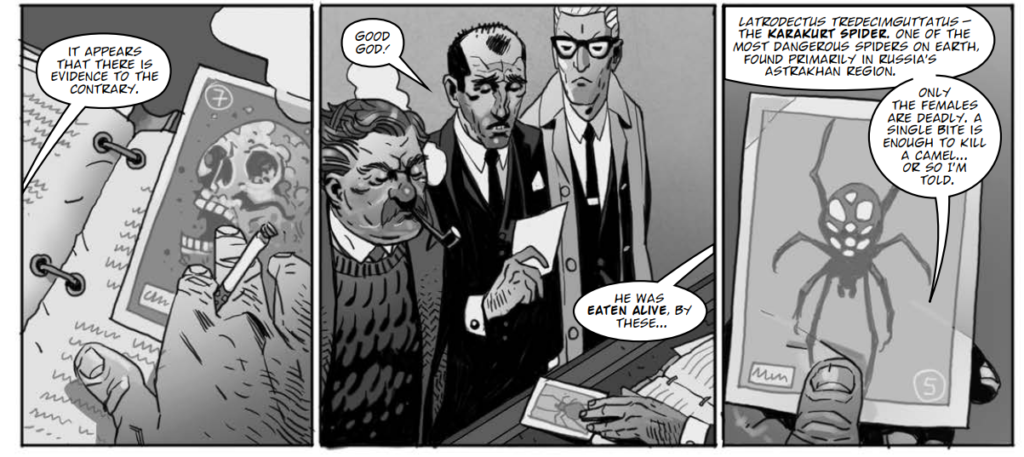
I suppose WWII Constanta is a must at some point? English Civil War? But how about Constanta in full-on turn-on, tune-in, drop-out mode, Haight Ashbury, late 60s? Or maybe more from the Napoleonic Wars, possibly negotiate some sort of Constanta/Sharpe crossover?
IE: We’re not in a big rush to get back to WW2 but he’ll certainly be cropping up at various key points in history, some major, some minor. I also want him to cross paths with the rest of the vampire community at some point. Constanta is unique as vampires go in that he was made by magic not by a bite, so it’ll be interesting to see how the rest of them treat him.
And as far as crossovers go, we’ve already seen the Black Max appear here, any other surprise appearances in store?
IE: I’ve got a few in mind but they’ll all be subject to approval by Tharg.
Finally Ian, what can we look forward to from you in the future?
IE: The maestro who is Disraeli and I are finally embarking on the next series of Helium! It’s true, don’t faint! There’s more Kingmaker in the works with that young rapscallion Leigh Gallagher and some Dredds which are alway fun!
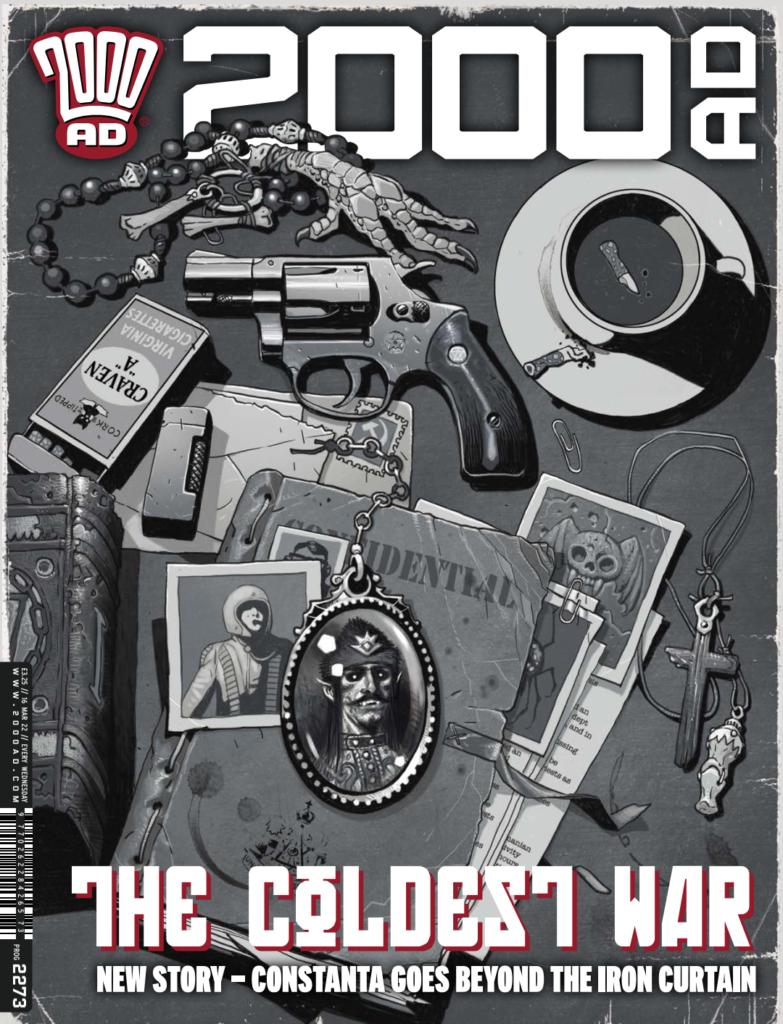
Thank you to Ian for taking the time to chat to us about the new Fiends of the Eastern Front: 1963 – you can see the blood running red in a very cold war starting in the pages of 2000 AD Prog 2273, out 16 March.
If you want to read more from Ian on writing Fiends, there’s this interview from 2018 with Ian and Dave Taylor talking Fiends of the Eastern Front: 1812.
And at some point in the future, most likely 2023, you’ll be able to get hold of the Fiends of the Eastern Front collection containing not just the original classic from Gerry Finley-Day and Carlos Ezquerra, not just the Stalingrad follow-up from Bishop and MacNeil, but also recent brilliant Fiends of the Eastern Front from Edginton, Taylor, and Trevallion.
